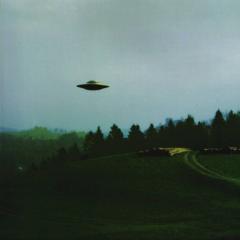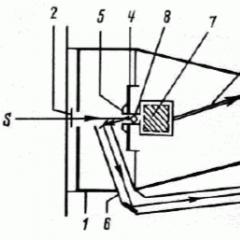Carpenkov Concept of Modern Natural Science 11 Edition. H.
Concepts of modern natural science. Karpenkov S.Kh.

6th ed., Pererab. and add. - M.: Higher. Shk., 2003. - 488 p.
The textbook is written in accordance with state educational standards (state 2000). It sets out the issues of naturally scientific knowledge of the surrounding world, the fundamental concepts, principles and laws of nature are presented, the actual problems of modern natural science, related to the study of natural processes and properties of the substance at the molecular level, are reflected natural-scientific aspects of energy, ecology and highlights of the most important achievements of natural science underlying modern high-tech technologies.
Designed for students of higher educational institutions. It can be interesting and useful to a wide circle of readers.
Format: PDF ( 6th ed., Pererab. and add., 2003 )
The size: 4.6 MB
Download: yandex.disk.
Format: Doc ( 2nd ed., snap. and add., 200 0 )
The size: 4MB
Download: yandex.disk.
Preface to the sixth edition
The first edition of the proposed book was published in 1997. It was one of the first textbooks dedicated to the discipline "Concept of Modern Natural Science", studied by students of higher educational institutions of socio-economic and humanitarian directions.
As new materials accumulated and the following editions are substantially refined, supplemented and corrected fixes and clarifications. When improving, many years of experience reading lectures and practical training at the State University of Management was taken into account. As a result, the textbook was improved and changed: the number of chapters from nineteen (in the first edition) to eleven (in later publications) was reduced, the outdated information was replaced with new ones, some sections were written again, etc. The sixth edition was significantly recycled and corrected.
In the proposed textbook in a compressed and accessible form, fundamental natural-scientific knowledge are presented, i.e. Knowledge of nature, which is needed by every educated person to not only tell the mystery, the power and beauty of nature, but also to understand what needs to be done to preserve the environment and live in harmony with nature.
When studying the concepts of modern natural science, it is useful to remember the instruction of the Russian publicist D.I. Pisareva (1840-1868): "We need to study at school, but much more needs to learn from school."
The book is designed for students of higher educational institutions of day, evening and correspondence forms of training in the specialties of the economy, jurisprudence, management, philosophy, sociology, ecology, management, marketing, merchant, tourism, business, finance, entrepreneurship, etc.
Preface ................................................... .................................................. .................. eight
Introduction ................................................... .................................................. ........... nine
Part I.. Natural science and modern world............................ 11
1. Natural science and the world ............................................ .....................13
1.1. Naturally scientific knowledge and modern education ................................ 13
1.2. The role of natural science in the formation of professional knowledge. . eighteen
1.3. Naturally scientific knowledge and management sphere ........................................... 23.
1.4. Fundamental and applied problems of natural science ................... 27
1.5. Natural science and mathematics ............................................... .................. 31
1.6. The development of natural science and pseudo-scientific trends ........................... 35
1.7. Natural science and morality ............................................... ........... 42.
1.8. Rational and irrational principles of knowledge ................................ 46
56
2. Naturally scientific knowledge of the surrounding world ..................................... 57
2.1. The process of natural scientific knowledge ............................................. . 57.
2.2. Forms of natural scientific knowledge ............................................. ... 62.
2.3. Methods and techniques of natural scientific research ......................... 70
2.4. Scientific discovery and proof .............................................. .................... 77.
2.5. Experiment - the basis of natural science .............................................. ... 82.
2.6. Modern funds of natural-scientific research ............. 85
2.7. The most important achievements of modern natural science ..................................... 90
Control questions................................................ .................................. 93
PART II. Fundamental laws and concepts of natural science
3. Fundamental principles and laws ............................................ ...................... 97
3.1. Physics - the fundamental industry of natural science ........................................ 97
3.2. Matter and movement, time and space ...................................... 104
3.3. The concept of an atomism. Discreteness and continuity of matter. . . 108.
3.4. Fundamental interactions ........................., ........................ ......... BY
3.5. The principle of relativity ................................. ................................... 116
3.6. Properties of space - time and laws of preservation .............................. 118
3.7. Fundamental laws of Newton ............................................... ......... 122.
3.8. Statistical and thermodynamic properties of macrosystem .... 125
3.9. Thermodynamic laws ................................................ ............................ 129.
3.10. Electromagnetic concept ................................................ ............................ 134.
3.11. Corpuscular wave properties of light ......................................................... ... 138.
Control questions................................................ ............................................ 143
4. Atomic in the nucleon levels of the structure of the mother.......................... 144
4.1. Atom structure ................................................ ................................... 144.
4.2. The corpuscular wave properties of microparticles ......................................................... 147
4.3. Probabilistic nature of microprocessions ............................................... ...... 150.
4.4. Modern atomic systems ............................................... ............... 153.
4.5. Nuclear processes ................................................ ........................................... 156.
4.6. Elementary particles................................................ ........................... 164.
4.7. Prospects for the development of microme physics .............................................. ........ 166.
169
Part III . Naturally scientific concepts of development. . . 171.
5. Development concept and evolution of the universe ........................................... ............. 173
5.1. Essence of the Development Concept ................................................. .......................... 173.
5.2. Evolution of the Universe .................................................. .............................. 176.
5.3. The structure of the universe ................................................ ...................................... 182.
5.4. Means of observation of objects of the universe ............................................ 185
5.5. The problem of searching for extraterrestrial civilizations .............................................. ........ 188.
5.6. Solar system - part of the universe ............................................. ............. 190.
5.7. Earth - Planet of the Solar System ............................................. ....... 195.
Control questions................................................ ........................................... 202
6. Naturally scientific knowledge about substance .................................................... 203
6.1. Development of chemical knowledge ............................................... .................. 203.
6.2. Synthesis of chemicals ............................................... ................... 207.
6.3. Modern catalysis ................................................ ............................. 212.
6.4. The formation of earth and extraterrestrial substances ........................................... 218
6.5. Natural stocks of raw materials ................................................. ........................ 220.
6.6. Organic raw materials ................................................ .............................. 227.
6.7. New chemical elements ............................................... .................. 234.
6.8. Perspective chemical processes ............................................... ... 238.
6.9. Modern materials ................................................ ........................ 243.
6.10. Perspective materials ................................................ ..................... 252.
Control questions................................................ .................................. 261
7. Biosphere levelorganizations Matters ............................................262
7.1. The birth of living matter ..................................................... ................... 262.
7.2. Carrier of genetic information ............................................... ............. 264.
7.3. Structure and function of proteins .............................................. .................. 269.
7.4. Building and varieties of cells .............................................. ................... 271.
7.5. The origin of life ................................................ .......................... 275
7.6. Background of evolutionary idea ..................................................... ......... 279.
7.7. Evolution of life ................................................ ............ .............................. 283.
7.8. Flora and fauna.............................................. ............... 294.
7.9. Man is a phenomenon of nature ................................................ .......................... 302.
7.10. Life support of a person ................................................ .......................... 310
7.11. Extending the life of the body ............................................... ........................... 321.
7.12. Formation of the noosphere ................................................ ..................... 327.
Control questions................................................ ........................................... 328
Part IV. . Naturally scientific foundations of modern technical
Nologii, Energy and Ecology ................................
329
8. Naturally scientific aspects of technologies ........................................... ..... 331
8.1. Development of information technology products ............................................. 331
8.2. Modern means of accumulation of information .................................... 337
8.3. Multimedia systems and virtual world ...................................... 342
8.4. Micro and nanoelectronic technologies ............................................. . 344.
8.5. Laser technology .................................................. ...................................... 352.
8.6. Modern biotechnologies .................................................. ................. 359.
8.7. Gene technologies ................................................ .......................................... 361.
8.8. The problem of cloning ................................................ .................................. 364.
366
9. Naturally scientific problems of modern energy .........................367
9.1. Energy - Source of Welfare .............................................. ............. 367.
9.2. Energy conversion .................................................. ...................... 369.
9.3. Efficiency of production and energy consumption .................................. 373
9.4. Thermal power plants .................................................. ............................. 375
9.5. Improving the efficiency of power systems ............................................ 376
9.6. Hydroistrices and geothermal energy sources ........................ 382
9.7. Helioenergy ................................................. ................................... 387.
9.8. Wind energy................................................ ........................................ 389.
9.9. Nuclear power................................................ ....................................... 392.
9.10. Features of the domestic energy ................................................. ....... 396.
Control questions................................................ ................................... 398
10. Naturally scientific aspects of ecology .......................................... 399
10.1. Global catastrophes and evolution of life .......................................... 399
10.2. Preventing environmental disasters ..................................................... 403
10.3. Natural catastrophes and climate .............................................. ............ 405
10.4. Greenhouse effect and acid precipitation ............................................ 412.
10.5. Preservation of the ozone layer ............................................... ........................... 416.
10.6. Water resources and their preservation ............................................. .......... 420.
10.7. Energy consumption and wiring of our habitat ............................. 422
10.8. Radioactive effect on the biosphere ............................................. 425
10.9.
Naturally scientific problems of environmental protection ....... 431
Control questions................................................ ...........................................434
11. Harmony of Nature and Man .................................................................... 435
11.1. Human and nature............................................... ................................... 435
11.2. Preservation of natural resources ............................................... ........ 436.
11.3. Upgrading power systems ................................................ .................. 438.
11.4. Effective energy consumption ............................................... ..... 439.
11.5. Saving material resources ............................................... ...... 444.
11.6. Saving resources on transport .............................................. ....... 446.
11.7. Cities and Nature ................................................. ............................ 451.
11.8. Solving the problems of disposal ............................................... .............. 454.
11.9. Perspective technologies and the environment .............................. 459
11.10. Globalization of biosphere processes ................................................. 460.
Control questions................................................ ................................... 462
Conclusion ............................................................... .................................................. ....... 464.
Literature................................................. .................................................. ................ 465
Dictionary of Special Terms ............................................... .............................. 466.
Name pointer ................................................ .................................................. .......... 479.
To narrow the results of the search results, you can specify the request, specifying the fields for which search. List of fields is presented above. For example:
You can search for several fields at the same time:
Logically operators
The default operator uses And..
Operator And. means that the document must comply with all elements in the group:
study Development
Operator Or. This means that the document must correspond to one of the values \u200b\u200bin the group:
study Or. Development
Operator Not. Excludes documents containing this item:
study Not. Development
Search type
When writing a query, you can specify the method for which the phrase will be sought. Four methods are supported: Search for morphology, without morphology, search for prefix, search phrase.
By default, the search is made taking into account morphology.
To search without morphology, in front of words in the phrase, it is enough to put a dollar sign:
$ study $ development
To search for the prefix you need to put an asterisk after the request:
study *
To search the phrase you need to enter into double quotes:
" research and development "
Search for synonyms
To include in the search results, the words need to put a lattice " #
"Before the word or before expressing in brackets.
In applied to one word for it will be found to three synonyms.
In applied to expression in brackets, it will be added synonym for each word if it was found.
Not combined with search without morphology, search for prefix or search by phrase.
# study
Grouping
In order to group search phrases you need to use brackets. This allows you to manage the milk logic of the query.
For example, you need to make a request: to find documents from which the author of Ivanov or Petrov, and the title contains words research or development:
Approximate word search
For approximate search you need to put a tilda " ~ "In the end of the word from the phrase. For example:
bromine ~
When searching, words as "brom", "rum", "prom", etc. will be found.
You can additionally specify the maximum number of possible revows: 0, 1 or 2. For example:
bromine ~1
By default, 2 edits are allowed.
Criterion intimacy
To search by the criterion of proximity, you need to put a tilda " ~ "At the end of the phrase. For example, in order to find documents with the words research and development within 2 words, use the following query:
" study Development "~2
Relevance of expressions
To change the relevance of individual expressions in the search, use the sign " ^
"At the end of the expression, after which, indicate the level of relevance of this expression in relation to the rest.
The higher the level, the more relevant this expression.
For example, in this expression, the word "study" is four times relevant to the word "development":
study ^4 Development
By default, the level is 1. Valid values \u200b\u200bare a positive real number.
Search in the interval
To specify the interval in which the value of some field should be, the boundary values \u200b\u200bseparated by the operator should be specified in brackets To..
A lexicographic sorting will be made.
Such a request will return results with the author, ranging from Ivanov and ending with Petrov, but Ivanov and Petrov will not be included in the result.
In order to enable the value to the interval, use square brackets. To exclude the value, use curly brackets.
Modern Natural science
Edition second,
corrected and supplemented
Ministry of Education of the Russian Federation
as a textbook
for university students
publishing house
"Academic Project" 2000
Reviewers:
department of Philosophy of the Financial Academy
under the Government of the Russian Federation
(Head. Department of Prof. M.V. Valoan.)
and laureate of the USSR State Prize
in the field of science and technology, Dr. Tehn. science
prof. V.A. Shakhov
Karpenkov S.Kh.
K26 Concept of modern natural science: Textbook for universities. - M.: Academic Project, 2000. Ed. 2nd, copy. and add. - 639 p.
ISBN 5-8291-0085-1
The textbook is written in accordance with the State Educational Standard. It contains fundamental principles, laws, concepts and the most important achievements of natural science, as well as the natural and scientific foundations of modern technologies, energy and ecology.
For university students. It can be interesting and useful to a wide circle of readers.
UDC50
BBK 20.
ISBN 5-8291-0085-1
© Karpenkov SK, 2000
© Academic project, originality
layout, clearance, 2000
Dedicated to all those who
i would like to tell the mysteries,
power and beauty
nature.
Preface
In modern society, much attention is paid not only to various industries, but also rapidly developing high-tech technologies, energy and ecology. Fundamental concepts of natural science and natural science basics of modern technologies, energy and ecology are dedicated to a real textbook.
The textbook consists of four parts. In Part I, the practical significance of natural science in modern society is substantiated and the main provisions of the natural science knowledge of the surrounding world are considered. Part II set out the fundamental laws and concepts of natural science. Part III is devoted to the natural and scientific concepts of development of processes in nature. Part IV, natural-scientific foundations of modern technologies, energy and ecology are considered.
The material of the textbook is set out at the level of concepts, i.e. Given the fundamental ideas and systems of views on the natural-scientific issues. With the presentation of the material, mathematical expressions, formulas and terms are used. Naturally, the scientific essence of the issues under consideration is presented in a visual and accessible high school form.
The textbook is written in accordance with the contents of the author's teaching manuals: "The main concepts of modern natural science" (UNITY, 1998) and "Concept of Modern Natural Science: Workshop" (UNITY, 1998), - and also taking into account corrections, changes and additions to the material set forth in previously published tutorial of the author "Concept of Modern Natural Science" (UNITY, 1997).
When studying the concepts of modern natural science, it is useful to remember the wise instruction of the Russian publicist Dmitry Pisareva (1840-1868): "We must learn at school, but much more needs to learn from school."
The book is intended for students of higher educational institutions of day, evening and correspondence forms of learning economic, legal, philosophical, as well as specialties and specializations of management, sociology, technology, management, marketing, merchant, tourism, business, finance, entrepreneurship, etc.


